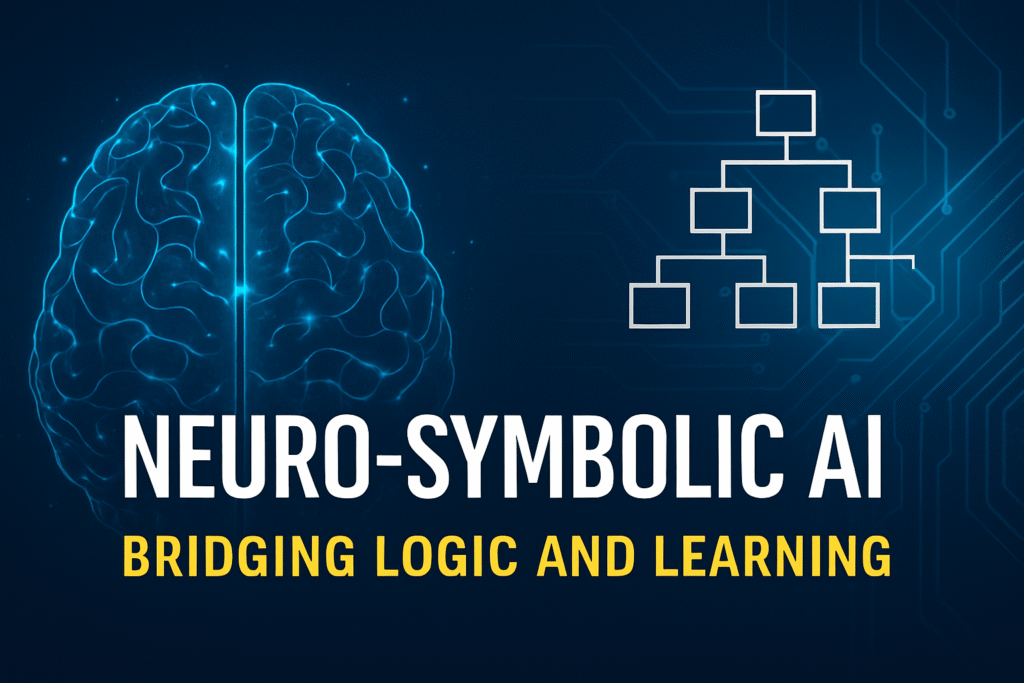Neuro-Symbolic AI: Bridging Logic and Learning in the Next Wave of Artificial Intelligence
In the race to make artificial intelligence smarter and more reliable, a powerful new approach is quietly emerging: neuro-symbolic AI. This hybrid model combines the pattern recognition strengths of neural networks with the logical reasoning of symbolic systems—creating AI that can not only predict but also explain its decisions.
While mainstream attention focuses on generative models like ChatGPT and Gemini, tech pioneers at IBM, MIT, and DARPA are betting on neuro-symbolic AI as the future of explainable machine learning—a critical need in medicine, law, education, and beyond.
What Is Neuro-Symbolic AI?
At its core, neuro-symbolic AI merges two long-standing fields:
- Neural Networks: These systems excel at pattern recognition—identifying images, interpreting speech, and generating text.
- Symbolic AI: Based on logic and rules, it enables machines to reason, infer, and apply structured knowledge like humans do.
Together, they form systems that can:
- Learn from data (neural nets)
- Use reasoning and logic (symbolic AI)
- Provide traceable, interpretable explanations
Imagine an AI doctor that not only predicts a diagnosis based on symptoms but also explains why it reached that conclusion using medical rules and knowledge graphs.
Why It Matters in 2025
As powerful as deep learning is, it has major flaws:
- It’s a “black box”: we often don’t know why it made a decision
- It can fail at reasoning, math, or applying common sense
- It struggles with data that lacks patterns or examples
In contrast, neuro-symbolic systems offer:
- Transparency: You can audit how they reached a decision
- Trust: Vital in regulated fields like healthcare or finance
- Structured Thinking: They understand rules, exceptions, and consequences
That makes them ideal for high-stakes applications where trust, fairness, and explainability matter.
Real-World Applications
Neuro-symbolic AI is already making waves in areas where logic and learning must work together:
1. Medical Diagnosis
Used to combine neural detection of symptoms (from scans, vitals) with rule-based decision trees grounded in clinical knowledge. It can explain exactly which symptoms triggered a diagnosis.
2. Education Tech
Learning platforms that can adapt lessons, explain wrong answers, and guide students using both behavior patterns and curriculum logic.
3. Robotics & Planning
Robots need both perception (vision, audio) and reasoning (navigation, sequencing tasks). Neuro-symbolic AI helps machines “think ahead.”
4. Legal AI & Policy
AI that can interpret contracts, laws, or policies using symbolic logic, but also scan huge databases with deep learning.
5. Cybersecurity
In this emerging use case, neuro-symbolic AI is being explored for identifying novel threats by combining behavioral pattern detection with symbolic reasoning based on known attack vectors. This dual-layered approach improves threat recognition and helps explain security decisions to analysts.
Who’s Leading the Charge?
Several research labs are pushing neuro-symbolic AI into the spotlight:
- IBM: Their Neuro-Symbolic Concept Learner can recognize visual objects and explain how it classifies them.
- MIT-IBM Watson Lab: Researching hybrid reasoning systems that can diagnose, tutor, and even debate.
- DARPA’s XAI Program: Focused on creating explainable military-grade AI that human operators can understand.
- Stanford & Microsoft: Investing in logic-enhanced models that bridge symbolic reasoning with LLMs.
What’s Next?
As language models grow more powerful, the next challenge is making them trustworthy. Neuro-symbolic architecture could:
- Make LLMs like GPT or Gemini explain their reasoning
- Prevent hallucinations and flawed logic
- Enhance AI safety and decision accountability
With more industries requiring transparent AI, neuro-symbolic systems may soon become essential infrastructure.
“In the future, we won’t just ask AI for answers. We’ll ask it to show its work.”
Final Thoughts
Neuro-symbolic AI blends the best of both worlds—learning and logic—to create machines that think, reason, and explain. As we step into the next generation of AI, it won’t be enough for systems to be powerful. They’ll need to be understandable.
And neuro-symbolic AI is showing us how.
